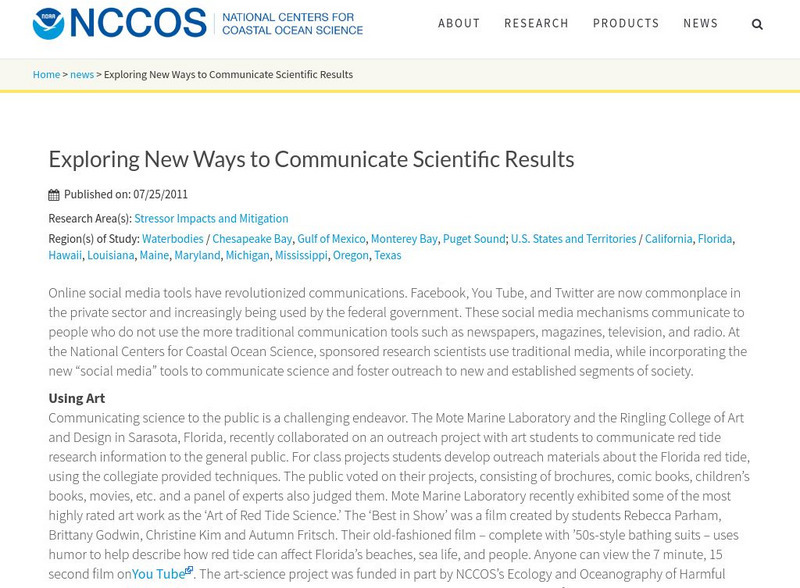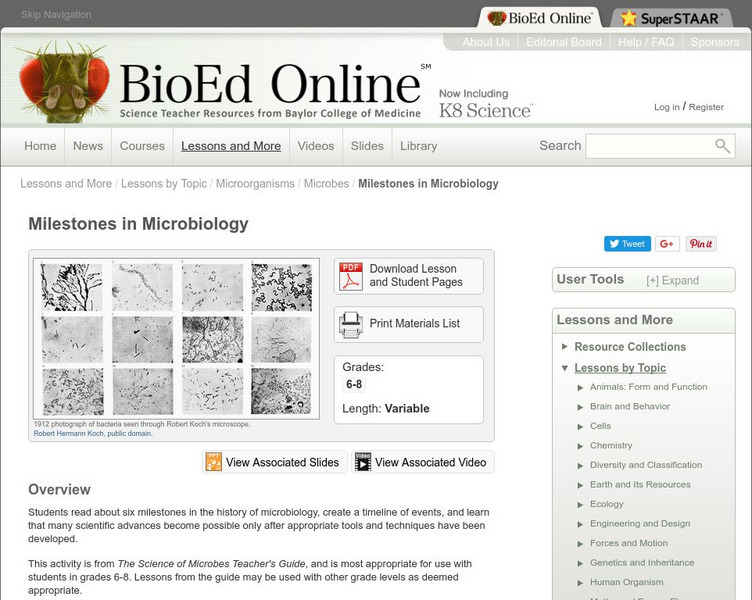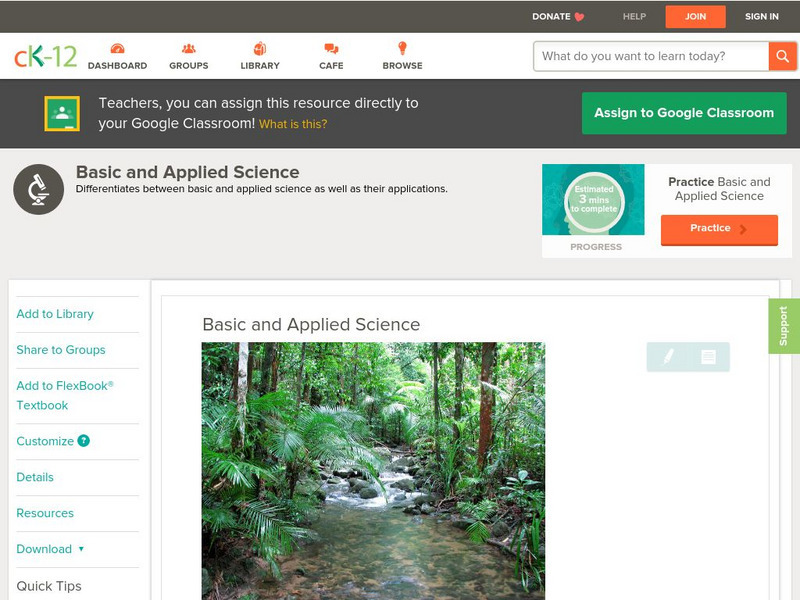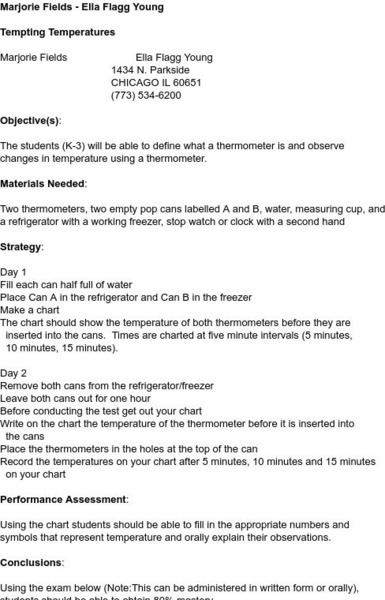Hi, what do you want to do?
Curated OER
What Does Your First Day of Winter Look Like?
Students brainstorm the characteristics of winter. Using an email program, they share their characteristics of winter with those in another part of the country. They compare and contrast each letter they receive with their own criteria...
Curated OER
Friction and Machines
Fifth graders experimentally determine the relationship of friction to the functioning of machines. They demonstrate that rollers can decrease frictional force and increase speed and research to discover other ways that friction can be...
Curated OER
Rocketry in Motion
Students investigate why a balloon flies in one direction as air escapes in the opposite direction, which helps them understand the nature of rockets and fireworks. Individually and in teams, students conduct research to create a...
Curated OER
Pure Substances and Mixtures
Students compare and contrast the properties of substances and mixtures. For this chemistry lesson, students simulate spontaneous mixing by performing a short class activity. They differentiate heterogeneous and homogeneous mixtures.
Curated OER
Weather Instrument Use and Application
Eighth graders measure temperature, wind speed and pressure using Skymaster SM-28. In this earth science lesson, 8th graders collect data and record observations taken from outdoors. They explain why numerical values are different in...
Curated OER
Interpreting Language Arts, Health, and Visual Art
Fourth graders draw a magic mask with special powers based on one aspect of health. They write 1-2 paragraphs descibing the mask's special powers. Then they scan the images using a computer software program and write a new paragraph on...
Curated OER
Adaptable Animals
Young scholars examine the types of adaptations that animals use to survive. They research the animals and report their findings to the class.
Curated OER
Remember When?
High schoolers work in cooperative groups to research life in a decade of the 20th century. Each group member writes a 7-10 page paper highlighting the social, political and cultural events and the group presents a Powerpoint...
Curated OER
Land Biomes Research and Presentation
Fifth graders work in cooperative groups to research an assigned land biome using various sources. Groups create either a book or a PowerPoint presentation of their assigned land biome.
Curated OER
Machines: Useful But Dangerous
First graders study, observe, and use a simple machine. They study necessary safety and review posted safety rules related to using a machine and identify strategies for reporting any accidents or injuries.
Curated OER
How Does Climate Affect Our Shelter Needs?
Fourth graders investigate how weather influences shelter choices. They explore the concept of insulation and discuss some traditional Native American shelters. They discuss the shelters used by the Okanogan people during the various...
NOAA
Noaa: Nccos: Exploring New Ways to Communicate Scientific Results
Discusses the many types of media technology that scientists have available today to communicate the results of their research. These include social media tools, educational web pages, videos, virtual worlds, and podcasts. Many examples...
Concord Consortium
Mobile Inquiry Technology: Calibrating Thermometers
For this activity, students examine how thermometers are calibrated. They develop an understanding of the importance of having standard measurement tools for accuracy in scientific research.
BioEd Online
Bio Ed Online: The Science of Microbes: Milestones in Microbiology
Middle schoolers read about six important discoveries in microbiology and put them on a timeline. They develop an understanding of how these discoveries connect to the invention of new scientific tools and technology. The lesson plan and...
PBS
Pbs Teachers: Scientific American: Pieces of Mind: Remembering What Matters
Explore how the new technology of PET (positron emission tomography) imaging has given researchers a tool to look inside the brain. Investigate uses of this technology in brain research and list ideas for future uses of PET scans.
Math Science Nucleus
I. Science Ma Te: Integrating Science, Math and Technology
This site offers a wealth of online textbook-related materials that encourage the discovery of science in the world around us. Enter the site to access material on specific topics. Each section contains reading material (complete with...
CK-12 Foundation
Ck 12: Life Science: Basic and Applied Science
[Free Registration/Login may be required to access all resource tools.] Science can be "basic" or "applied." The goal of basic science is to understand how things work. Basic science is the source of most scientific theories. Applied...
National High Magnetic Field Laboratory
Magnet Academy: Jean Charles Athanase Peltier (1785 1845)
Although he didn't start studying physics until he retired from the clock-making business at age 30, French native Jean Peltier made immense contributions to science that still reverberate today. Even with the primitive tools available...
Science and Mathematics Initiative for Learning Enhancement (SMILE)
Smile: Tempting Temperatures
In this lesson plan learners learn how to use a thermometer and compare changes in temperature using water in the fridge and water in the freezer. Helps students create charts to analyze data.
Science Education Resource Center at Carleton College
Serc: Bioinformatics
This project is a series of interrelated modules designed to introduce the student to modern biological techniques in the area of bioinformatics. Bioinformatics is the application of computer technology to the management of biological...
Alabama Learning Exchange
Alex: To Herb or Not to Herb
This unit allows young scholars to research some common herbal supplements to evaluate the safety and effectiveness of the herb. Students will compare the herbal supplements to pharmaceutical medicines to judge which is the better...
Texas Education Agency
Texas Gateway: Lab Equipment
In the following lesson students will be introduced to general and specialized lab equipment.


























